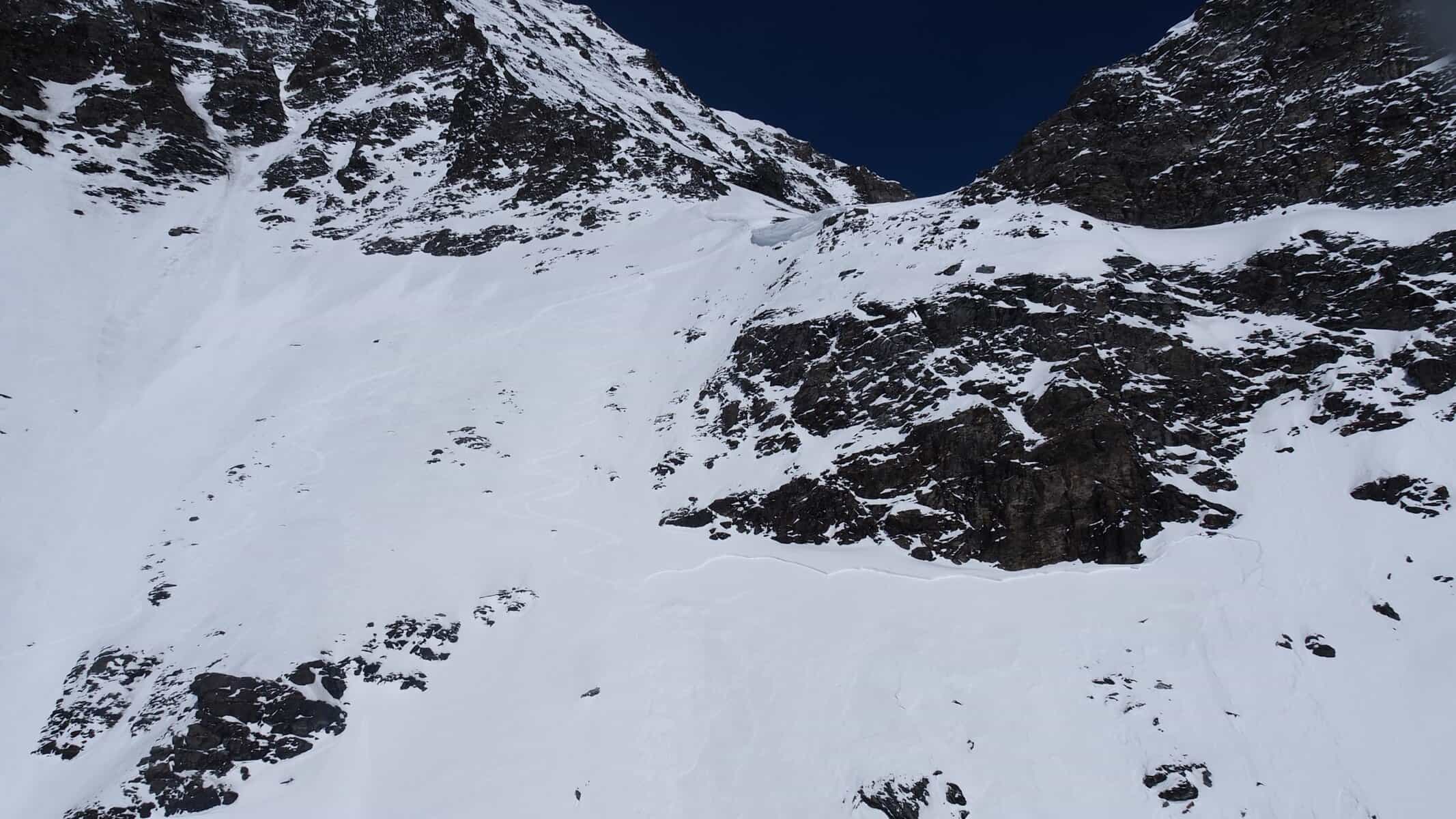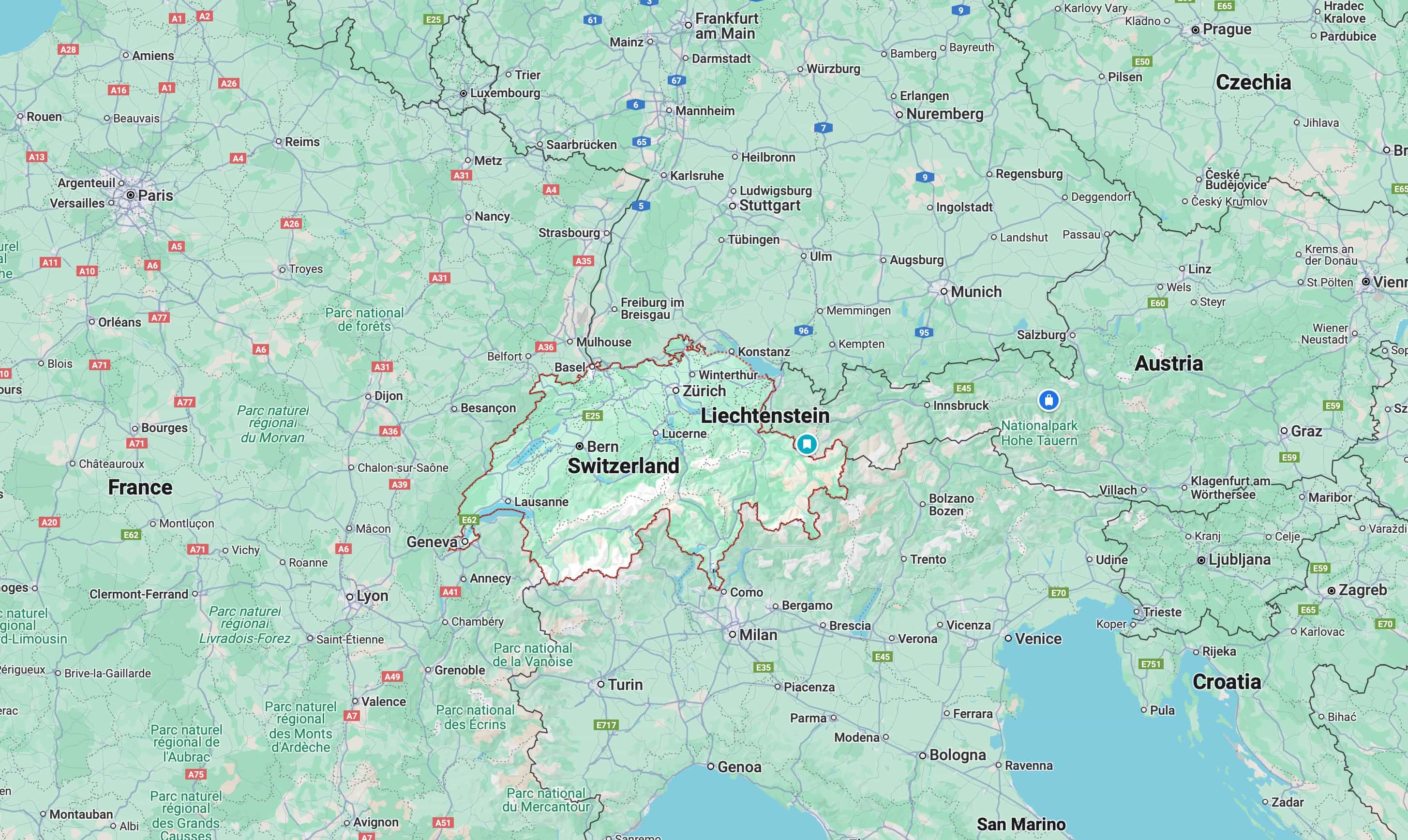
Two skiers died in separate avalanches last week in Switzerland’s Valais Alps. The incidents occurred just days apart in popular backcountry zones, prompting rescue teams to emphasize the need for caution as spring arrives and temperatures rise, creating unstable snowpacks.
Bourg-St-Pierre Avalanche
On April 3, a 34-year-old Swiss skier was buried near the Valsorey hut after triggering a slide while descending steep terrain, according to police reports. His companion alerted nearby guides, who located the victim using avalanche transceivers. Despite rapid intervention by Air-Glaciers helicopter crews and avalanche dogs, the skier did not survive. Authorities are investigating whether wind-loaded snow on fragile layers contributed to the slide.
Barrage de Mauvoisin Tragedy
Two days later, a 58-year-old Belgian skier died near the Mauvoisin dam when a collapsing icefall triggered a mixed avalanche of ice and rock, according to police reports. The guide accompanying him administered first aid and summoned rescuers, but the victim succumbed to his injuries.

Avalanche Conditions
The Swiss Federal Institute for Snow and Avalanche Research (SLF) has warned of “considerable” danger (Level 3) across elevations above 7,000 feet (2,200 meters), citing:
- Wind slabs on north-facing slopes, where fresh snow overlies weak layers.
- Wet-snow slides triggered by daytime heating, particularly below 10,000 feet (3,000 meters).
A new three-tiered danger scale (3-, 3=, 3+) now refines risk assessments, with Level 3 linked to half of all Swiss avalanche fatalities.
Safety Measures
Experts urge skiers to:
- Monitor real-time SLF bulletins and the White Risk app.
- Avoid steep slopes (>30°) during afternoon warming.
- Carry transceivers, probes, and shovels—equipment used in both rescues.
Switzerland’s UNESCO-recognized avalanche management system blends traditional knowledge with technology and has reduced infrastructure-related deaths to nearly zero since 1999. However, backcountry incidents persist, claiming 23 lives annually on average.
The new three-tiered avalanche danger scale introduced by the Swiss Federal Institute for Snow and Avalanche Research (SLF) enhances the traditional five-level European system by subdividing levels into finer categories: minus (-), equals (=), and plus (+). This aims to provide greater precision in assessing avalanche risks, particularly for dry snow avalanches starting from Level 2 (moderate danger) and above.
How the Sublevels Work
- Minus (-): Indicates the lower end of a danger level.
- Equals (=): Represents the middle range.
- Plus (+): Denotes the upper end, signaling heightened risk within that level.
For instance, Level 3 (considerable danger) now includes 3-, 3=, and 3+. A “3+” designation suggests a significantly higher likelihood of large avalanches compared to “3-” or “3=”. This refinement is particularly critical for Level 3, which accounts for half of all annual avalanche fatalities in Switzerland. The nuanced scale allows forecasters to communicate evolving conditions better as snow stabilizes or destabilizes over time.

Why This Change?
The SLF introduced sublevels after years of requests from avalanche forecasters and snow sports professionals seeking more granular risk assessments. Data analysis confirmed that avalanche activity correlates strongly with these sublevels, validating their practical relevance. For example, historical data show more reported avalanches on days marked as “3+” than “3-“. This system helps users plan safer routes by distinguishing between varying degrees of risk within the same level.
Impact on Avalanche Forecasting
The sublevels improve communication of avalanche risks without altering the foundational five-level European scale. They are exclusive to Switzerland, but other European Avalanche Warning Services are monitoring their effectiveness and may adopt them in future seasons.
Limitations
The sublevels apply only to dry snow avalanches and exclude wet snow conditions, where intermediate levels have proven ineffective. Additionally, while the system adds complexity, surveys indicate that users find it intuitive and beneficial for backcountry trip planning.
This nuanced approach reflects Switzerland’s leadership in avalanche forecasting and safety measures, offering skiers and mountaineers a clearer understanding of risks in an inherently unpredictable alpine environment.
